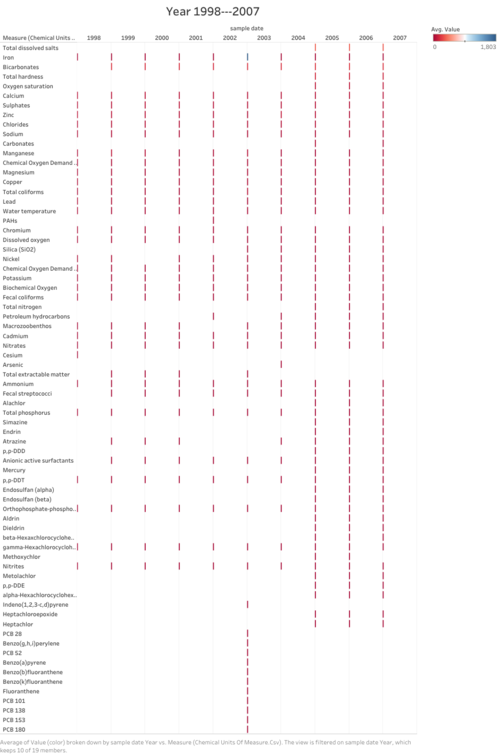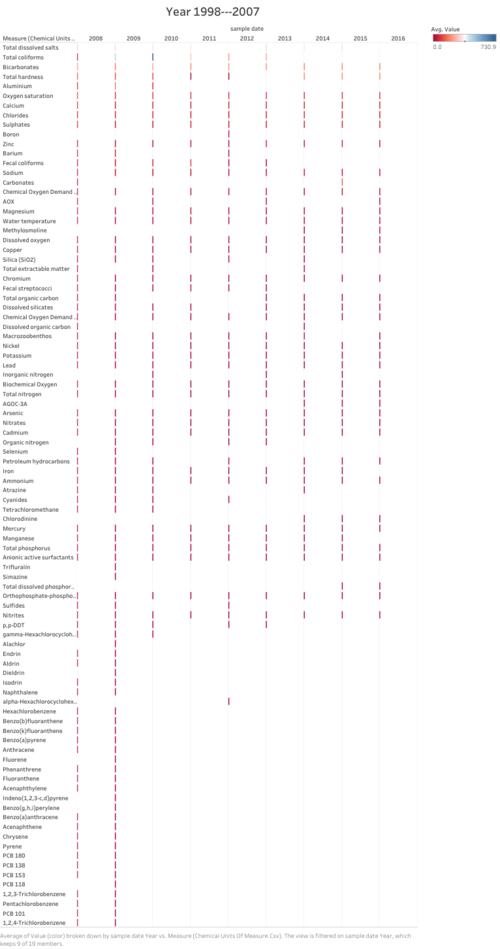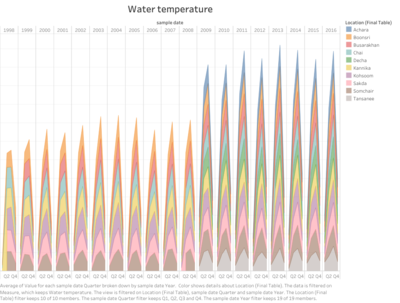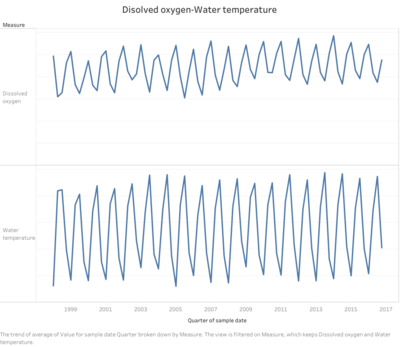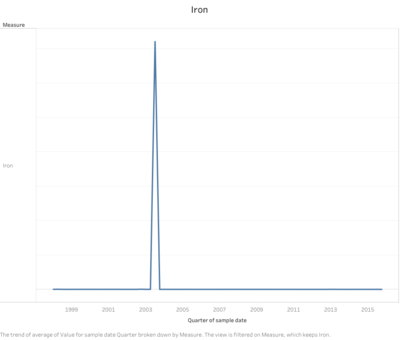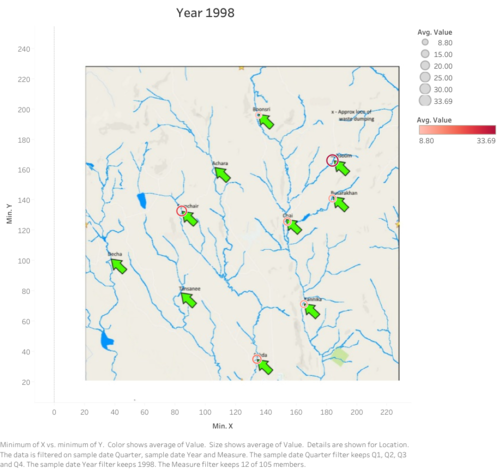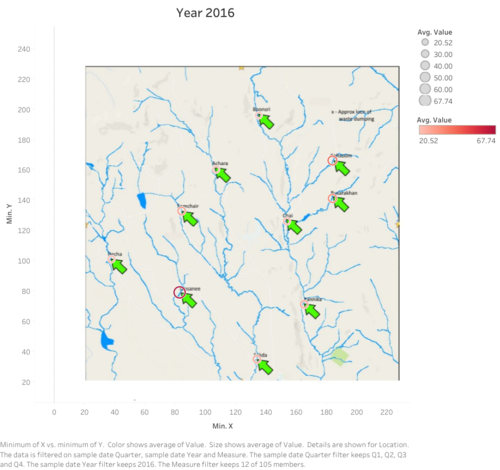MU FUYAO Questions-answer
|
|
|
|
|
Question 1
Characterize the past and most recent situation with respect to chemical contamination in the Boonsong Lekagul waterways. Do you see any trends of possible interest in this investigation?
| Statement | Graph |
|---|---|
| 1.Year 1998---2007
There are some strange values in this dataset. For same location, same time and same measure, but there are different values. I think it’s repetitive value. So, I get average of them. |
|
| 1.Year 2008---2016
There are some strange values in this dataset. For same location, same time and same measure, but there are different values. I think it’s repetitive value. So, I get average of them. |
Question 2
What anomalies do you find in the waterway samples dataset? How do these affect your analysis of potential problems to the environment? Is the Hydrology Department collecting sufficient data to understand the comprehensive situation across the Preserve? What changes would you propose to make in the sampling approach to best understand the situation?
| Anomalies | Graph |
|---|---|
| 1.Water temperature
|
|
| 2.Iron
|
Question 3
After reviewing the data, do any of your findings cause particular concern for the Pipit or other wildlife? Would you suggest any changes in the sampling strategy to better understand the waterways situation in the Preserve?
| Year | Graph |
|---|---|
| 1.Year1998
|
|
| 2.Year2016
|
All locations are polluted now. And we have 10 monitoring locations now. But each of them are responsible for quite big area. If we want to find some area are less polluted, we need to add monitoring locations. Each of them monitor little area than now. And we can collect data with higher accuracy. It's will provide us better idea for how to protect wildlife in these area.

